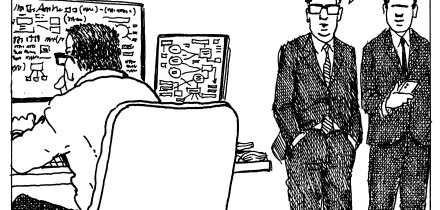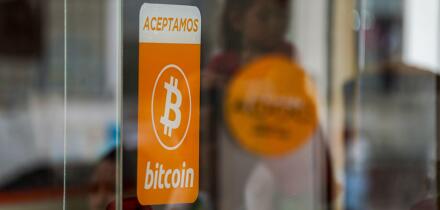Following on from last week's Learning Curve discussing the basics of swap provider diclosure under Regulation AB, part two delves into timing and indemnification issues.
Disclosure: Whose Responsibility?
A derivative counterparty that provides financial data or financial statements to an asset-backed security sponsor or depositor for inclusion in a prospectus supplement is not an issuer of the ABS and will not have an issuer's liability for material misstatements or omissions in the information that it provides. To protect themselves, sponsors have generally obtained indemnification from the derivative counterparty for any loss the sponsor or its affiliates suffer as a result of deficiencies in the counterparty's information, whether included in the prospectus supplement or in the Exchange Act filings of the depositor.
Updating Required
Although, arguably, a depositor should have been required to measure maximum probable exposure only at the time of entering into the derivatives contract, because changes in the maximum probable exposure will only result from market-wide changes in interest rates and interest rate expectations, not changes specific to the swap provider, Reg AB doesn't take this approach. Instead, updated financial information complying with Item 1115(b) must be included under Form 10-D if maximum probable exposure has reached the 10% or 20% thresholds at the end of the distribution period for which the Form 10-D is filed, even if no such information was previously required to be included.
Sample Of Indemnification
A typical form of this indemnification would be as follows:
"Indemnity by Swap Counterparty. If, at any time during the term of the Derivative Transaction, (i) Swap Counterparty provides Issuer with financial information about Swap Counterparty pursuant to Item 1115(b) for the purpose of allowing Issuer to fulfill the Disclosure Obligations (the "Financial Information") and (ii) Issuer includes the Financial Information in its filings with the Commission in order to fulfill the Disclosure Obligations, then, from the date the Financial Information is so filed with the Commission (the "Filing Date"), Swap Counterparty shall indemnify and hold harmless Issuer and Sponsor, and the directors and officers of Issuer and Sponsor, and any person controlling Issuer or Sponsor, from any and all losses, claims, damages and liabilities (collectively, "Losses") caused by any untrue statement or alleged untrue statement of a material fact contained in the Financial Information or [PORTION RELATING TO ITEM 1115(a)(1)] (the "Item 1115(a)(1) Disclosure"), or caused by any omission or alleged omission to state a material fact that is required to be stated in the Financial Information or the Item 1115(a)(1) Disclosure, or is necessary to make the statements in the Financial Information or the Item 1115(a)(1) Disclosure, in light of the circumstances under which they were made, not misleading."
Because reciprocity is of the essence of indemnification provisions, the above language generally begets the below language:
"Indemnity by Issuer and Sponsor. From the Filing Date (if it occurs) and simultaneously with any indemnity from Swap Counterparty that becomes effective pursuant to Section 2 above, Issuer and Sponsor shall jointly and severally indemnify and hold harmless Swap Counterparty, and the directors and officers of Swap Counterparty, and any person controlling Swap Counterparty, from any and all Losses caused by any untrue statement or alleged untrue statement of a material fact contained in the Prospectus Supplement (except for the Financial Information and the Item 1115(a)(1) Disclosure), or caused by any omission or alleged omission to state a material fact that is required to be stated in the Prospectus Supplement (except for the Financial Information and the Item 1115(a)(1) Disclosure) or is necessary to make the statements in the Prospectus Supplement (except for the Financial Information and the Item 1115(a)(1) Disclosure), in light of the circumstances under which they were made, not misleading."
Some swap providers may be unwilling or unable to provide the financial information required by Item 1115 when maximum probable exposure is 10% or more. For these providers, the sponsor or issuing entity may be willing to give the swap provider the choice of agreeing either to (1) provide the Item 1115 information when required, or (2) at its own expense, novating the transaction to a satisfactory counterparty who is able to provide the necessary financial information.
Which Base Case?
The requirement to periodically recalculate maximum probable exposure to determine if updated derivatives provider financial information must be filed on Form 10-D surfaces the question, which base case should be used in order to do the statistical scenario analysis which calculates the probable exposures to the swap provider over a two or more standard deviations range on either side of the base case. Presumably the base case to be used is the assumed yield curve used in pricing a hypothetical new interest rate swap entered into on an arm's length basis on the date of determination with a term equal to the remaining term of the derivatives contract. Needless to say, none of this is spelled out in Reg AB.
How Long Should Indemnification Survive?
Under the Securities Act, the statute of limitations for Section 11 liability for material misstatements or omissions in a registration statements is one year after the plaintiff discovers or reasonably should have discovered the misstatement or omission, but in any event no later than three years after the misstatement or omission was made. Thus, there is no need for a derivative provider's indemnity for information included in the prospectus supplement to survive longer than three years after the date that the prospectus supplement is first used. However, because derivatives provider information may be required to be filed with Form 10-D at a time in the future, sponsors generally obtain indemnification for longer periods (such as until the ABS have been paid full). Just as Item 1115 is not likely to actually cause swap counterparty financial disclosure to be increased because the maximum probable disclosure will generally be below 10% (at least for interest-rate swaps), the life-of-deal indemnification provisions will in reality have teeth for a much shorter time. Because Reg AB did away with the market making prospectus, the vast majority of ABS issuing entities will suspend Exchange Act reporting requirements each January as they will have fewer than 300 record holders of their securities, determined by the number of DTC direct participants holding positions. In theory, the issuing entity could again become subject to Exchange Act reporting if the number of record holders of its securities later climbed above 300, but the likelihood is very low.
Swaps Outside The Deal
In December 2000, the U.S. Congress made it clear that swaps are not securities when it adopted the Commodity Futures Modernization Act. Thus, if an ABS investor purchases a capped floating rate ABS security and enters directly into a rate cap to hedge the risk of rising interest rates, writing the cap will have no Securities Act consequences for either the cap provider or the investor. In contrast, if the same instrument is embedded in an ABS security subject to Reg AB, the prospectus supplement or the depositor's Exchange Act filings may require the inclusion of significant financial disclosures about the cap provider, as discussed above.
This week's Learning Curve was written by Adam Glass, partner at Linklatersin New York.





